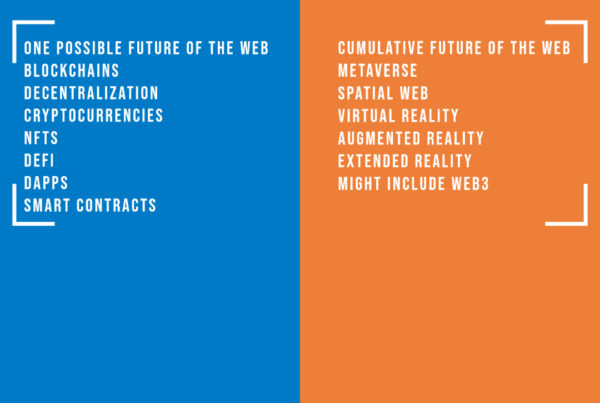As people continue to struggle with what the metaverse is or will be, there is often confusion about what constitutes our current iteration of the metaverse (which is more of a hodgepodge than a true metaverse, but that’s a different discussion).
Massively-multiplayer online (MMO) games (such as World of Warcraft and Eve Online) are often believed to be part of the metaverse. After all, they’re technically virtual worlds, right?
Not quite.
MMO games helped pave the way for the metaverse, but they are not inherently part of it (although they can be under certain circumstances). Nor do they function like virtual worlds in the context of the metaverse.
Here, we’ll describe the most important differences between virtual worlds and MMO games.
Content: Preinstalled vs. User-Generated
We previously discussed why metaverse graphics are so bad. Part of the reason lies in one of the biggest differences between virtual worlds and online games: user generated content.
While the action of online games unfolds online, the environments themselves are preinstalled on the user’s computer. By environments, we’re talking worlds, items, clothing, enemies, quests, dialogs, buildings, and scripts (behaviors).
It’s all developed and controlled by the game’s developers. They decide what the world will look like, which experiences are available, and how interactions work. That allows them to preinstall most of the game’s components to facilitate faster loading times.
Dialog between players and the timing of engagement are pretty much the only things that developers don’t control.
On the other hand, the content found in virtual worlds is largely user-generated. This means everything contained within can be created, changed, and removed at any moment.
So, they can’t be preinstalled on the user’s machines. Yes, an application is usually installed that provides access, but it rarely serves much more of a purpose than that.
This means that virtual worlds always have something new to offer. You don’t have to wait months or years for an expansion to provide a fresh experience. Just explore or follow a creator’s blog to see what they’re planning next.
However, it also means that virtual worlds need to scale back graphics to facilitate faster load times. Even when they do, lag is still common. Again, MMO games avoid this by preinstalling environments and assets on the player’s computer.
Economies
Most MMO games facilitate player-to-player transactions, but they are fictitious. They use an in-game currency that produces no real value outside the context of the game. They are also limited to items that have been predesigned by the game’s development team.
However, virtual worlds have robust economies that revolve around the content and experiences created by users. Even better, most virtual worlds (including Decentraland, Second Life, Roblox, and Meta Ruffy) allow their currencies to be exchanged for fiat money. Your activities can generate a real income.
Social Engagement
Both MMO games and virtual worlds facilitate social interactions among real people. However, the way that players and users engage with each other differs.
Players typically gather together (or are paired together) to complete an objective. Occasionally, an in-game event might bring players beyond completing tasks.
Users not only socialize with others, but also create opportunities for people to gather and socialize – even if there is no objective to complete. For example, many users on platforms like Second Life and Decentraland have created virtual clubs where other users can meet and socialize. Others have created theme parks, games, and concert venues.
Players vs. Users
This post has featured a clear distinction between players and users. That’s intentional; it points to another difference virtual worlds and MMO games.
MMO games allow players to pursue objectives that help unravel a story. It’s all pre-planned by developers and storytellers for players to enjoy.
However, users “use” virtual worlds to create art, experiences, virtual goods, social opportunities, and yes, games.
This is what I meant when I said that MMO games can exist in virtual worlds: users can use a platform like Roblox or Second Life to create a game within that virtual world using its building tools. The experience is then available for other users of that virtual world.
MMO games are specifically designed to be played, whereas virtual words are designed to be used by creators.









Recent Comments